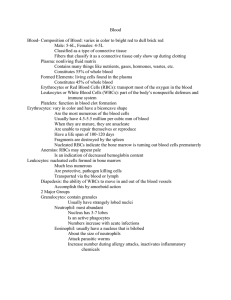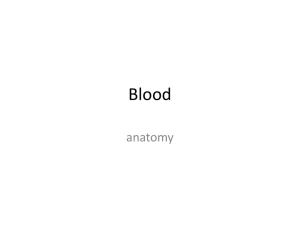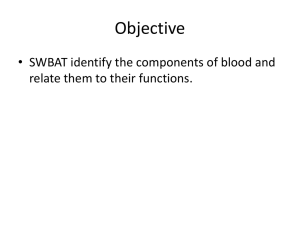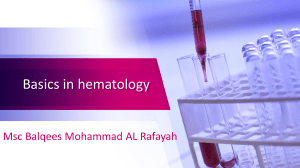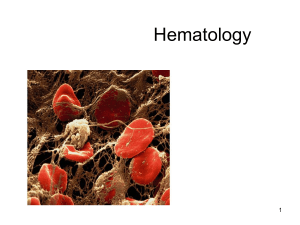ANP214Winter06ReviewConcepts2.doc
advertisement
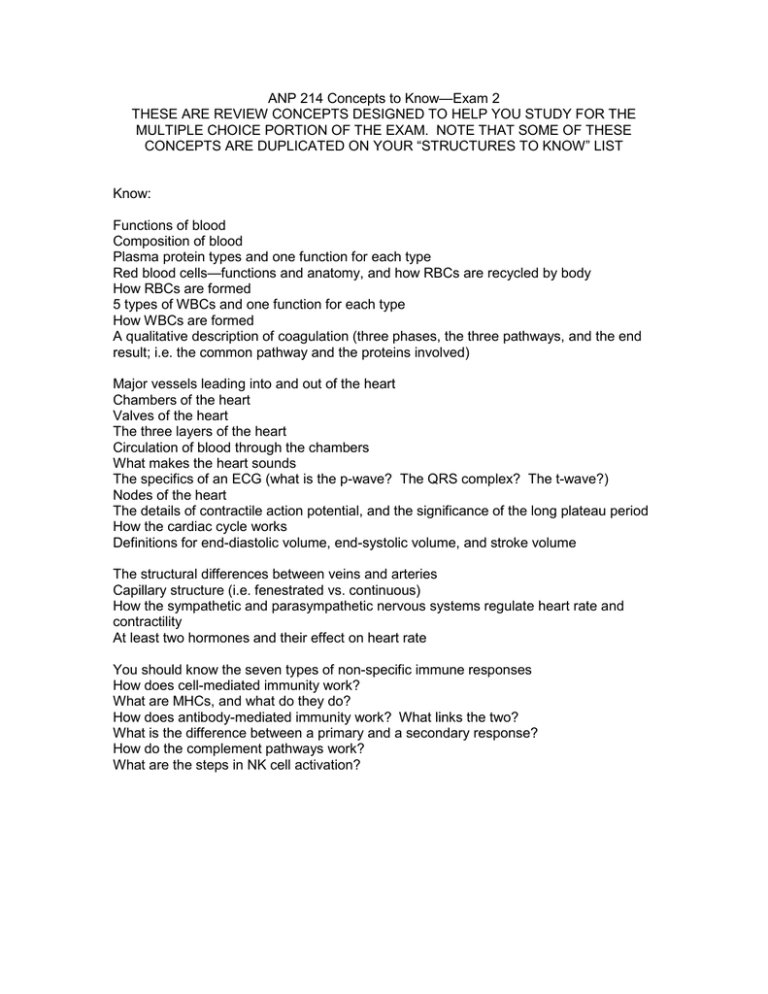
ANP 214 Concepts to Know—Exam 2 THESE ARE REVIEW CONCEPTS DESIGNED TO HELP YOU STUDY FOR THE MULTIPLE CHOICE PORTION OF THE EXAM. NOTE THAT SOME OF THESE CONCEPTS ARE DUPLICATED ON YOUR “STRUCTURES TO KNOW” LIST Know: Functions of blood Composition of blood Plasma protein types and one function for each type Red blood cells—functions and anatomy, and how RBCs are recycled by body How RBCs are formed 5 types of WBCs and one function for each type How WBCs are formed A qualitative description of coagulation (three phases, the three pathways, and the end result; i.e. the common pathway and the proteins involved) Major vessels leading into and out of the heart Chambers of the heart Valves of the heart The three layers of the heart Circulation of blood through the chambers What makes the heart sounds The specifics of an ECG (what is the p-wave? The QRS complex? The t-wave?) Nodes of the heart The details of contractile action potential, and the significance of the long plateau period How the cardiac cycle works Definitions for end-diastolic volume, end-systolic volume, and stroke volume The structural differences between veins and arteries Capillary structure (i.e. fenestrated vs. continuous) How the sympathetic and parasympathetic nervous systems regulate heart rate and contractility At least two hormones and their effect on heart rate You should know the seven types of non-specific immune responses How does cell-mediated immunity work? What are MHCs, and what do they do? How does antibody-mediated immunity work? What links the two? What is the difference between a primary and a secondary response? How do the complement pathways work? What are the steps in NK cell activation?

